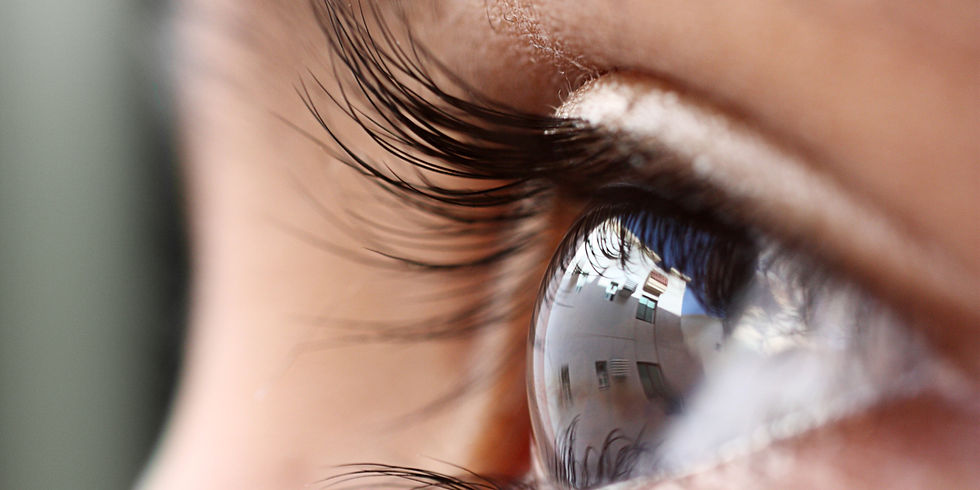Week 7: A New Eye..
- halsuhai
- Feb 20, 2015
- 3 min read

This week’s readings intersected in terms of many aspects of supervision technical skills and the purpose of using such skills and techniques. In terms of defining technical skills, Glickman, Gordon, and Ross-Gordon (2014), and Burns, Jacobs, and Yendol-Hoppey (under review) provided definitions that could be combined to serve as a more holistic one. In other words, Glickman, Gordon, and Ross-Gordon (2014) seemed concerned more about techniques that help to authentically view each teacher and where they are. This is very important because if we want to help teachers develop, we need to know where do they stand and then we, with them, can identify areas to focus on and type of support needed. In their definition, Burns, Jacobs, and Yendol-Hoppey (under review) were more focused on guiding tools to help supervisors move on the map of growth and development and this is another essential component of the holistic definition. What made me combine both views is my current need and my current role with the two functions of evaluation and supervision that I am responsible to assess students as well as support their professional development.
Speaking of supporting preservice teachers’ professional development, I feel these reading s came at the right time as I am trying to well prepare myself to take the back seat on the vehicle of my student’s inquiry on the topics they just selected (indeed the ones they settled on after the very natural beautiful struggle). Nolan and Hoover (2011) discussed different data collection devices and what role does the supervisor play with each. “Not to take over the control” is what I found valuable at this point because in the name of help and support, I am afraid of slipping out of the road and being the driver of my students’ inquiry vehicle unconsciously.
Another thing I felt connected with this week, is observation. Glanz and Sullivan (2013) helped me understand more how being a “skilled” observer is like having a new eye, an eye that detects what to see and knows why. I am grateful for their suggested list of tools and techniques as they made me realize how intentional and careful we need to be in selecting tools the better serve the situation. Also, I liked their point of view about videotaping. I used to consider it an observation tool by itself, however, now it’s more like a support to the many suggested tools. This combination could be powerful as it helps to use the tools in a context away from the distraction, via the captured teaching episode.
Also, when it comes to observation, I believe that the highest level of this skill is being able to observe one’s self continuously, not just the environment and the others in that environment in which we teach. In every interaction, we play a primary role in what’s going on and to where the interaction is moving so that it’s very important to not forget ourselves in relation to things that happen and especially the things we consider problem. Focusing on self, is basically the essence of reflection which goes along with inquiry. The National Association for Accreditation of Teacher Education (2008) emphasizes the significance of reflection, which is a standard for accreditation and no surprise why.
In my practice, I’ll start testing some of the tools to help me develop my own observational skill along with the use of videos. It’s my belief that we cannot help teachers to develop a skill unless we try it for ourselves along the road with them. Thus, I want to “train” myself on using them effectively and to me, seeing new “meaningful” things, would be my initial indicator of effectiveness and my first stage of the whole ongoing process.
References
Burns, R., Jacobs, J., & Yendoll-Hoppey, D (under review). In search of a framework for Clinically-rich preservice teacher supervision: A meta-analysis of empirical Literature from 2001 to 2013.
Glickman, C., Gordon, S. P., & Ross-Gordon, J. M. (2013). Supervision and Instructional Leadership: A developmental approach, (9th ed.). Boston: Allyn & Bacon.
Nolan, J., & Hoover, L.A. (2010). Teacher supervision and evaluation: Theory into Practice. Hoboken, NJ: Wiley. (3rd edition).
Sullivan, S., & Glanz, J. (2013). Observation tools and techniques. In Supervision that improves teaching and learning: Strategies and techniques (4th ed.). Thousand Oaks, California: Corwin.

















Comments